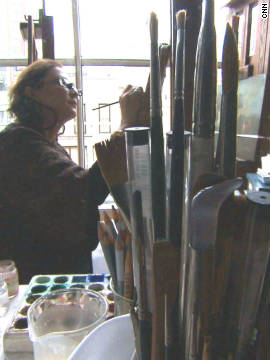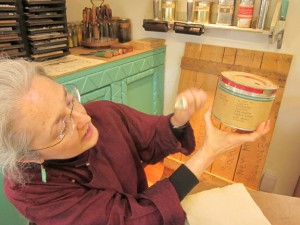New Club Quarters Opens in London on March 18, 2012. Now Accepting Reservations.
Club Quarters, Lincoln’s Inn Fields is located in the heart of London at Kingsway near Holborn and Chancery Lane – with the hotel entrance facing Lincoln’s Inn Fields. Convenient to London’s financial and legal institutions, Club Quarters, Lincoln’s Inn Fields is also within walking distance of the London School of Economics, Covent Garden and the Theatre District. The hotel will feature London’s newest guest rooms and in- room technology, a Club Living Room with social networking area and meeting rooms. The large terrace at the entrance of the hotel faces a 17th century square flanked by period buildings and will offer seasonal dining and cocktails. Low member rates* are now available via Member Services, www.clubquarters.com and through all GDS tools. *To enquire about remaining membership opportunities at Club Quarters, Lincoln’s Inn Fields, please contact your Membership Manager or email memberships@clubquarters.com. *Information and availability for Olympic Season reservations will be forthcoming.
Low Fixed Rates for Small to Medium‐Sized Meeting Rooms
All 15 Club Quarters have small to medium sized meeting rooms, which can be reserved at low fixed rates. Many locations have unique venues, including World Trade Center and opposite Rockefeller Center in New York, both with year round indoor/outdoor dining and event space with stunning views. Central Loop and Wacker at Michigan in Chicago offer brand new Club Living Rooms which contain glass enclosed board rooms. Trafalgar Square in London, offering two grand ballrooms and elegant small meeting spaces, is the most comprehensive meeting and event space in the West End.
Meeting Length Rate*
1 to 2 hours $100/£100
Half Day $200/£200
Full Day $350/£350
Meeting room rental fees also include an audio/visual package of flip chart and markers, projector and screen. To check availability, please call the Club Quarters Meetings Specialist at +1.203.905.2122 or +44 (0)20 7451 5902 or email meetings@clubquarters.com.
* Rates are based on small meeting rooms and some restrictions apply. Larger spaces are available at many locations at special rates.
“Night on the House” Program
The “Night on the House” program is continuing in 2012 with more dates available at all Club Quarters. It is fast and simple for a guest to earn and redeem a “Night on the House”.
- Member guests will earn one certificate each business stay which can be validated on the next stay at any Club Quarters
- Once validated, the member guest is entitled to a standard room for two on one of the weekend and holiday dates set aside for the program
- Certificates are combined and/or stays may be extended at your low member rate
- Reservations: call Member Services at +1.203.905.2100 (US) or +44.020.7451.5800 (UK). The program is based on availability and must be requested at the time of reservation. Reservations are subject to a $25/£15 service charge
- Additional details can be found at www.clubquarters.com/NightOnTheHouse.php.
Weekend & Holiday Rates for Employees, Family and Friends
Family and friends, in addition to employees, of member organizations, can request weekend and holiday rates at all Club Quarters, with the strongest availability being through the end of March. Even without a “Night on the House” certificate, member guests can enjoy subsidized rates starting at $62 in Philadelphia, Chicago and Houston, $72 in Boston, Washington, DC and San Francisco, $126 in New York and £67 in London. Member guests must request these rates by calling Member Services at +1.203.905.2100 or +44 (0)20 7451 5800.





 e received a certificate in French studies at the University of Paris-Sorbonne, Paris (1974) and then completed his BA in art history and chemistry at UW-Milwaukee (1977). Tony then went to the Churubusco Regional Conservation Center, in Mexico City, Mexico for a Certificate in Art Conservation and then was awarded a funded advanced internship for another Certificate in Conservation from Harvard University Art Museums in Cambridge, MA (1987). He then completed another Certificate in Mural Conservation at the ICCROM, in Rome, Italy (1992). Through his international studies and travels Tony spoke five languages fluently – French, Spanish, Italian, Portuguese, and English. He was an Associate Conservator for the Nelson-Atkins Museum of Art in Kansas City, MO, an Art Conservator for the Texas Conservation Center in West Texas, Project Conservator to the restoration of the Wisconsin State Capitol, Madison, WI and Project Director for SOS! (Save Outdoor Sculpture) Wisconsin Chapter, a grant program supported by the Smithsonian Institution. The SOS! position resulted in Tony co-authoring the book, ‘Public Sculpture in Wisconsin: An Atlas of Outdoor Monuments, Memorials, and Masterpieces in the Badger State’ in 1999. In 1987 Tony began his own art conservation business for museums and private clients and he managed Fine Arts Conservation for 24 years.
e received a certificate in French studies at the University of Paris-Sorbonne, Paris (1974) and then completed his BA in art history and chemistry at UW-Milwaukee (1977). Tony then went to the Churubusco Regional Conservation Center, in Mexico City, Mexico for a Certificate in Art Conservation and then was awarded a funded advanced internship for another Certificate in Conservation from Harvard University Art Museums in Cambridge, MA (1987). He then completed another Certificate in Mural Conservation at the ICCROM, in Rome, Italy (1992). Through his international studies and travels Tony spoke five languages fluently – French, Spanish, Italian, Portuguese, and English. He was an Associate Conservator for the Nelson-Atkins Museum of Art in Kansas City, MO, an Art Conservator for the Texas Conservation Center in West Texas, Project Conservator to the restoration of the Wisconsin State Capitol, Madison, WI and Project Director for SOS! (Save Outdoor Sculpture) Wisconsin Chapter, a grant program supported by the Smithsonian Institution. The SOS! position resulted in Tony co-authoring the book, ‘Public Sculpture in Wisconsin: An Atlas of Outdoor Monuments, Memorials, and Masterpieces in the Badger State’ in 1999. In 1987 Tony began his own art conservation business for museums and private clients and he managed Fine Arts Conservation for 24 years.